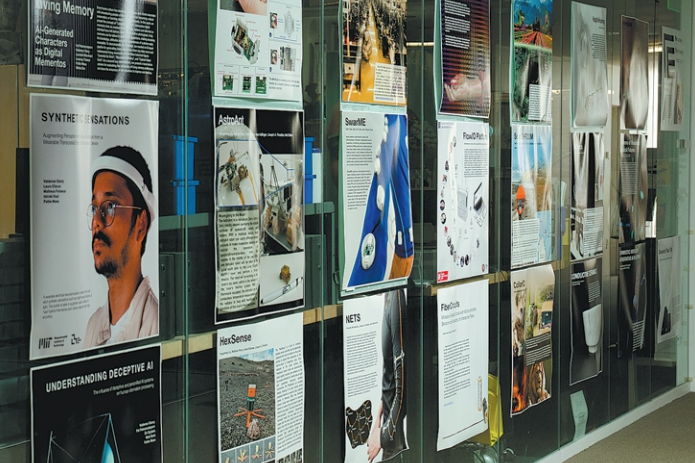'Competition 2.0' aims at unfair advantage


Challenges in sight as planned bill tries to limit technology flow to Beijing
Editor's note: The China-US relationship is widely regarded as the world's most important bilateral relations. However, after the Chips and Science Act was signed by US President Joe Biden in August, the country is seeking to further decouple from China by introducing the "China Competition Bill 2.0" to curtail the flow of advanced technology to China. This page takes a look at the proposed bill and the ensuing impact of decoupling on the US as well as its allies.
Over the next few months, the US Senate Democrats are expected to introduce a new bill aimed at limiting China's ability to develop leading technologies by imposing new sanctions and intensifying export controls.
The renewed effort, known as "China Competition 2.0", came one year after a sweeping bill was passed last year to fight off competition from China in semiconductor and other technologies.
The America COMPETES Act of 2022 was drafted and passed by the House of Representatives, and the United States Innovation and Competition Act was drafted and passed by the Senate. Both bills eventually became the Chips and Science Act, which was signed into law by President Joe Biden in August.
The Chips and Science Act authorized a roughly $170 billion increase for US scientific research over the next five years and $52 billion in subsidies to boost semiconductor manufacturing and research.
Last month, Senate Democratic leader Chuck Schumer said the new proposal would broaden last year's Chips and Science Act and he hoped to begin hearings on it in the coming months.
The planned legislation would center on limiting the flow of advanced technology to China, tightening rules to block US capital from going to Chinese companies, and others.
It would also seek funding for additional domestic investments in key technology areas.
The new bill will need Republican support to become law, as Republicans control the House of Representatives. It is possible that bipartisan legislation is possible using last year's Chips and Science Act as proof, Schumer said.
Republicans in the Senate had been supportive of some of the ideas proposed for the package, he said. However, his calls for bipartisanship on the ambitious plan to stave off competition from China are falling flat.
This year, Republicans are balking at spending more on new initiatives as they focus on cutting the federal budget.
Senate Republicans are wary about the details and costs of Schumer's initiative, and say they have not been included in Democrats' discussions.
John Thune, the No. 2 Republican in the Senate, said the new "China competition" initiative would have a hard time getting through Congress, given his party's concerns about spending, the debt ceiling crisis and the size of last year's bill.
Some Republicans also oppose the way the Chips and Science Act is being implemented. For example, they blasted the Biden administration for requiring semiconductor manufacturers who apply for subsidies under the act to provide childcare services at their facility.
And then there's the question of how much the new legislation would cost. As to whether Republicans would back the initiative, Thune, also Senate Minority Whip, told Reuters, "It would be challenging."
He cited Republicans' concerns about "too much spending", "the impact it's had on inflation" and "the way the deficits exploded and ballooned".
The Chips and Science Act aims to boost domestic production of semiconductors, address supply chain vulnerabilities and bolster the US' technological leadership.
It also establishes a new directorate at the National Science Foundation to focus on fields such as semiconductors and advanced computing, and authorizes $10 billion to invest in regional innovation and technology hubs.
So far, much of its focus has been on the $52 billion it provided to ramp up semiconductor manufacturing and research in the US, including $11 billion for advanced research and development.
Although the first round of funding has been secured, critics of the law have raised concerns about distribution.
George Koo, a retired international business adviser in Silicon Valley, doubted if the subsidy would be allocated effectively and lead to desired technical advances. He also doubted the manufacturers' capability of recruiting enough qualified workforce within the country.
While lawmakers have an ambitious vision for the development of the US semiconductor industry, the policy's conflicting goals may pose challenges for state and local governments.
"There's a little bit of goal conflict there," Nathan Jensen, a professor at the University of Texas in Austin, told Route Fifty, a digital news publication covering state and local government news. "We want the cutting-edge technology, but we want to locate companies in rural areas with high unemployment.
"The irony is asking states and local governments to support these projects and have some skin in the game."
Apart from the "chips" part, which authorized $52 billion, the Chips and Science Act also has the "science" part, which authorized about $170 billion for a number of key initiatives to boost research and development. This funding has to be approved by lawmakers each year through a separate appropriation process.
However, lawmakers have already fallen short in appropriating the full amount of funding authorized by the act for science and research.
Neither the Consolidated Appropriations Act for fiscal year 2023 nor the Biden administration's FY 2024 budget request has managed to keep up with the agency funding commitments established in the act.
The total funding for research agencies, including the National Science Foundation, the Department of Energy's Office of Science and the National Institute of Standards and Technology, was nearly $3 billion short of authorized targets this year. Next year's request for these agencies is more than $5 billion short, according to a recent analysis by the nonprofit Brookings Institution in Washington.































